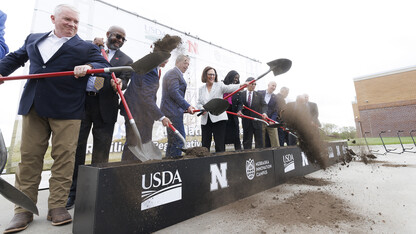· 3 min read
University releases annual Clery Act crime stats

Annual crime figures indicate that the University of Nebraska–Lincoln remains a generally safe and secure space for students, faculty, staff and the broader Husker community.
Released Sept. 30, the Campus Security and Fire Safety Report is published annually by the University of Nebraska–Lincoln Police Department in compliance with the Jeanne Clery Disclosure of Campus Security Policy and Campus Crimes Statistics Act. The report includes crime and fire statistics for the three most recent calendar years — in this case 2018 to 2020 — and outlines the university’s related resources, policies, procedures and programs.
Across four violent crimes — aggravated assault, burglary, rape and robbery — the university’s 2020 statistics are average or below average compared to 2019 figures (the most recent available) from Big Ten and peer institutions.
Nebraska reported zero aggravated assaults in 2020, with a 2019 range of 1 to 23 amongst the Big Ten and peer institutions (an average of 5.2 per institution). Burglary totals at Nebraska were 5 with a peer range of zero to 67 (average of 25); and there were no robberies reported on campus, with a peer range of zero to 5 (average of 1.3).
The university’s rape totals rose in 2020, in part due to a belated student report about being subjected to multiple unwanted sexual encounters with a partner. The university reported 26 rape cases in 2020, which includes an estimated 10 incidents from the belated report. The university recorded 13 rapes in 2019 and 16 in 2018. Rape totals at other Big Ten and peer institutions ranged from zero to 215 (average of 31).
For the last several years, the University of Nebraska–Lincoln has launched a number of initiatives to strengthen sexual misconduct education, training and policy. The work includes improving sexual misconduct supports for victims and the entire campus community.
Recent announced efforts include creating a permanent campuswide commission; repurposing Neihardt Hall into a one-stop resource which will include the Center for Advocacy, Response and Education, Women’s Center and LGBTQA+ Center; doubling the number of professionally trained advocates who work with victims/survivors; further expansion of the Center for Advocacy, Response and Education; and improving required sexual misconduct training.
Learn more about the university’s focus on sexual misconduct education, training and policy.
Other key data points from the university’s 2021 Annual Campus Security and Fire Safety Report include:
Declines in on-campus referrals and arrests for drug and alcohol violations;
Two cases related to intimidation based on race and ethnicity; and
Zero reports of robbery, domestic violence and motor vehicle theft.
The university’s 2021 Annual Campus Security and Fire Safety Report is available for review online. A request for a free paper copy of the report can be made in-person at the University Police Department headquarters at 300 N. 17th St., weekdays, 8 a.m. to 5 p.m., or by sending email to unl.police.unl.edu.
Learn more about additional reports and statistics related to security at the University of Nebraska–Lincoln.







